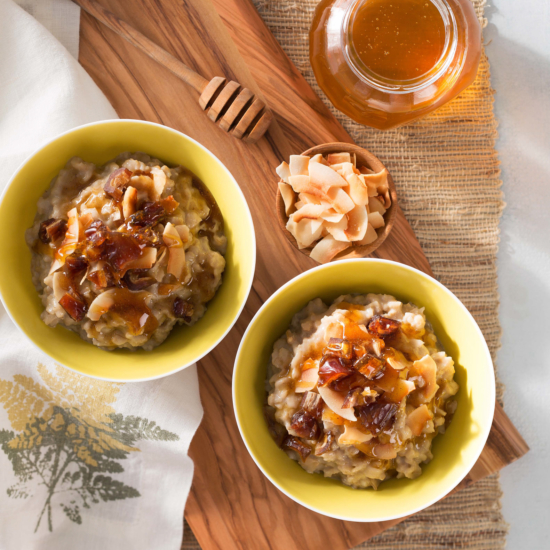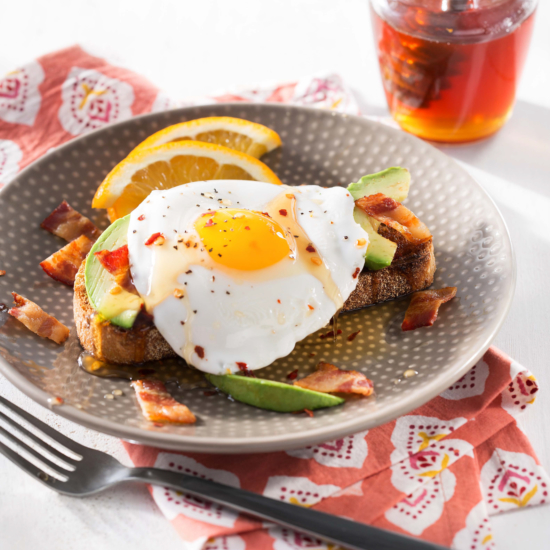
If you’re anything like us, this time of year has you dreaming of the warm temps of spring and summer. As the tail end of the coldest stretch of the year, February has a relatively equal mix of snow storms and sunshine, and what gets us through to the first day of spring in March is a nice hot breakfast. It makes sense then that February is National Hot Breakfast Month.
While the history of the occasion is unknown (though we did see a brief mention of it starting with popular breakfast brand Jimmy Dean, we didn’t see any other mentions of this connection), it is widely believed that it is meant to encourage us all to slow down in the mornings to enjoy a warm breakfast together before taking on the day. But did you know that breakfast as we know it today wasn’t always a thing (or even popular)? It’s true! In fact, according to the BBC, it was the Industrial Revolution of the 19th Century that regularized working hours, “with labourers needing an early meal to sustain them at work. All classes started to eat a meal before going to work, even the bosses.” With this in mind, we thought it would be fun to sink our teeth into a little more breakfast history and take a peek at how the meal has changed through the ages.
- ANCIENT EGYPT: The first recorded mention of a morning meal was in Ancient Egypt where laborers would eat a meal typically comprised of soup, beer, bread and even onions.
- ANCIENT ROME: While we’ve seen conflicting reports, it does appear that the Ancient Romans did eat a morning meal usually consisting of bread, cheese, olives, salad, nuts, dried grapes, and cold meats (typically from the night before). It is believed that today’s morning staples like milk and eggs may have also been consumed, in addition to a wine and honey mixture called mulsum. It looks like mealtimes moved around and weren’t very consistent.2
- MIDDLE AGES: By the Middle Ages, breakfast had grown unpopular and was viewed by the Catholic Church as “crass and boorish,” according to Heather Arndt Anderson, author of Breakfast: A History. While viewed as gluttonous by most people, it was widely accepted for low-status farmers, laborers, children, the elderly and the infirm – those who typically needed fuel for the day’s work or could not last until the main daytime meal.2
- 13th CENTURY ENGLAND: By this time, breakfast was a more widely accepted practice for working peasants and consisted of rye bread, cheese and ale, and by the 15th century, even nobility would partake in an early meal, adding in a side of meat.2
- 1500s: At this time, breakfast had fallen out of favor again with physicians across Europe actually warning against healthy adults consuming the pre-work meal.2
- 18th CENTURY: With the turn of the century and the establishment of the New World, breakfast came back in favor. How much in favor? Well, according to Anderson, “[b]reakfast was so adored in the middle of the 18th century that rooms devoted exclusively to the morning meal were built into new homes.” During this time we also saw the morning menu expand to include such dishes as mutton chops, bacon, eggs, corn cakes, muffins, and even pie (all noted to be favorites of Founding Fathers Benjamin Franklin and Thomas Jefferson).2
- 1837: By the beginning of Queen Victoria’s reign in 1837, breakfast staples bacon and eggs had cemented their place as a fixture on everyday breakfast tables.2
There is no doubt that the now highly endorsed meal has had quite the history, but is it true that it is the “most important meal of the day”? Views have obviously been mixed throughout history, and the topic is still debated today, though we can’t deny the proven benefits of starting your day off with a healthful breakfast.
We recently took a deep dive into how breakfast can help you maintain a healthier heart, better digestion, stronger bones, and even improve your metabolism (all of which you can learn more about here), so today we want to focus on how a hot breakfast with honey can not only warm you against February’s chill, but fuel you to power through whatever your day has in store.
More than just a topping for toast, honey brings a special touch to any pancake stack or power-packed oatmeal bowl. When paired with honey’s natural flavor and energy (providing 17 grams of carbohydrates per tablespoon), your breakfast will taste as good as it makes you feel. Concerned about the added sugar? That’s not a worry with honey – in fact, honey is actually slightly sweeter than sugar, so you can use less of it to achieve the same level of sweetness. Not to mention it plays well in a variety of sweet and savory breakfast dishes. With all of this in mind, we’re sharing 12 of our favorite honey-inspired hot breakfast recipes that are sure to get your day started off right!
We want to hear from you! What are your favorite honey breakfast recipes? Tell us all about them in the comments below.
SOURCES:
1 "Breakfast." Wikipedia, Wikimedia Foundation, 31 Jan. 2023, en.wikipedia.org/wiki/Breakfast. Accessed 2 Feb. 2023.
2 Anderson, Healther. Breakfast: A History. AltaMira Press, 2013. pp. 5-16.











